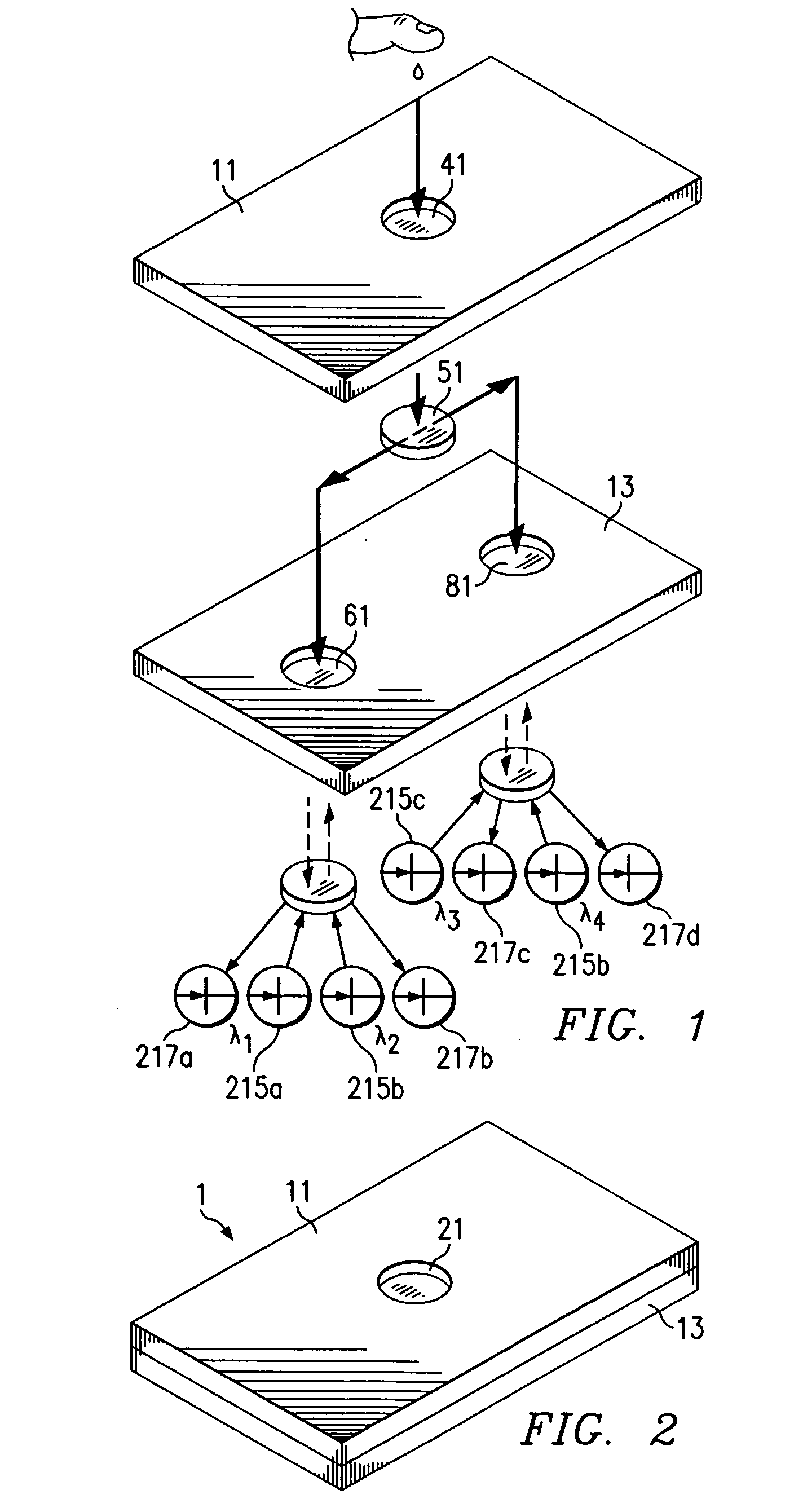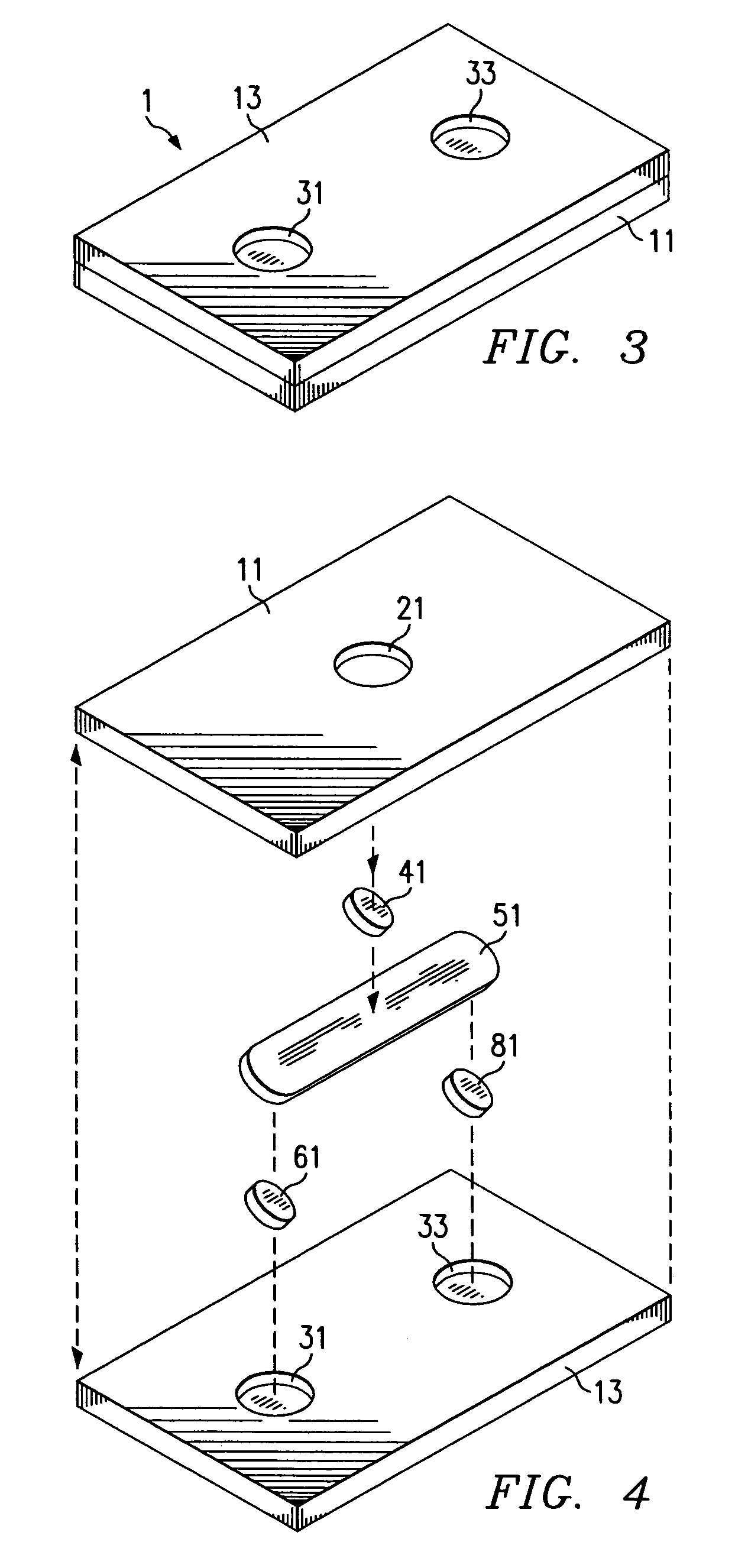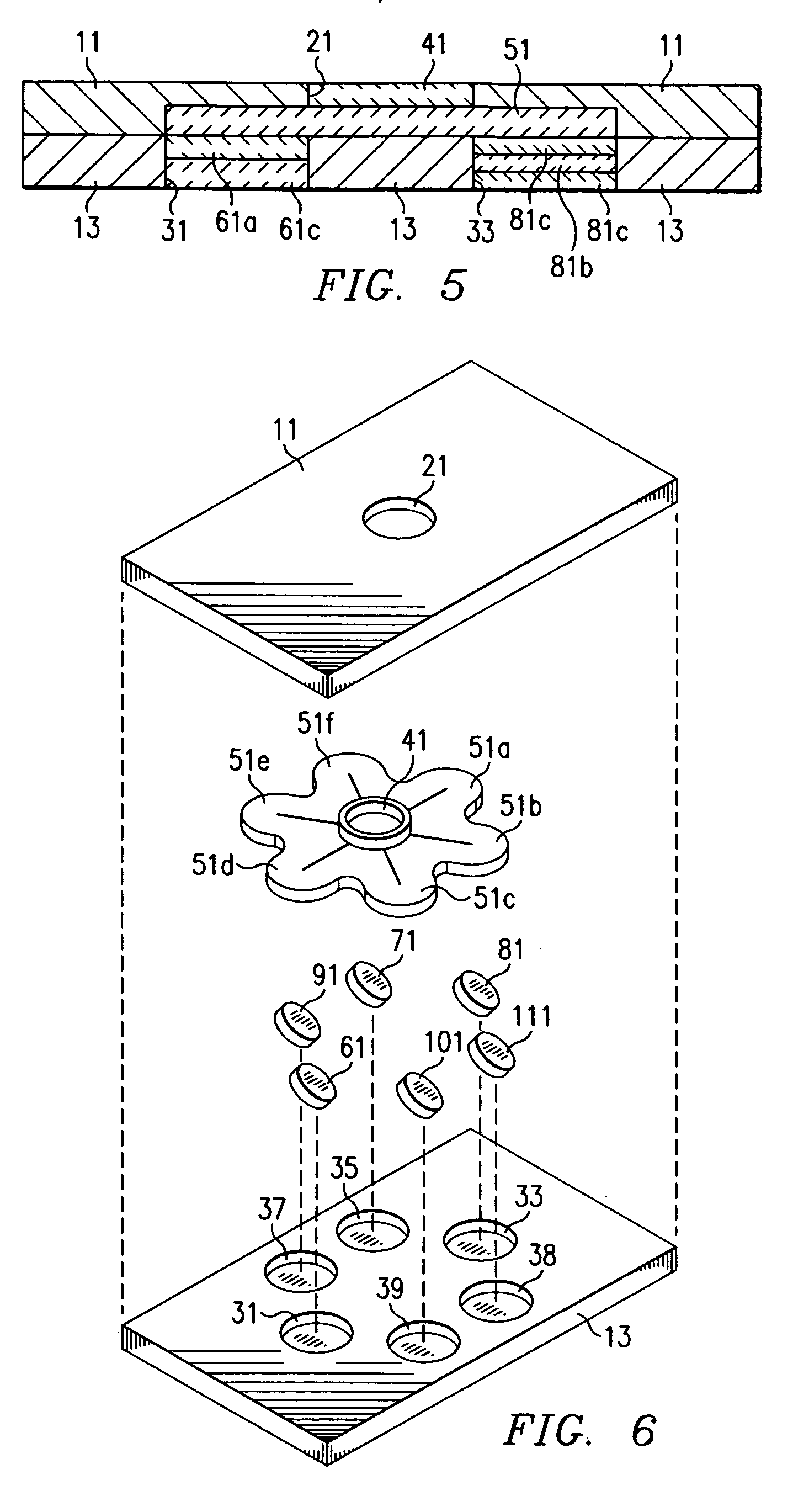Method, system, and apparatus for measurement and recording of blood chemistry and other physiological measurements
a technology of blood chemistry and other physiological measurements, applied in the field of methods, systems and apparatus for invitro testing of blood specimens, can solve the problems of angina pectoris, too many people still die, and too young death
- Summary
- Abstract
- Description
- Claims
- Application Information
AI Technical Summary
Benefits of technology
Problems solved by technology
Method used
Image
Examples
Embodiment Construction
[0126] A user friendly, home health care blood chemistry apparatus, method and system is provided. The invention requires only a “pin prick” or “pin stick” sample (1 to 50 microliters) of capillary blood, eliminating the need for puncturing arteries and veins by a trained technician to obtain a blood sample. Preferably the wound is self healing, not requiring a bandage or dressing. The sample is applied to a test strip, 1, including a sample receiving pad or region, 41, and sample analysis pads, 61, 81. The blood sample is applied to the sample receiving pad and flows, by surface tension, hydrophobicity, and capillary flow, to the separate analysis pads that are fluidically in parallel with each other and fluidically in series with the sample receiving pad. The blood sample is divided and distributed from the sample receiving pad, or region, 41, to the sample analysis pads or regions 61, 81, either through a separate sample distribution or dividing network, 51, or through a combined...
PUM
| Property | Measurement | Unit |
|---|---|---|
| half life | aaaaa | aaaaa |
| wave lengths | aaaaa | aaaaa |
| wave lengths | aaaaa | aaaaa |
Abstract
Description
Claims
Application Information
 Login to View More
Login to View More - R&D Engineer
- R&D Manager
- IP Professional
- Industry Leading Data Capabilities
- Powerful AI technology
- Patent DNA Extraction
Browse by: Latest US Patents, China's latest patents, Technical Efficacy Thesaurus, Application Domain, Technology Topic, Popular Technical Reports.
© 2024 PatSnap. All rights reserved.Legal|Privacy policy|Modern Slavery Act Transparency Statement|Sitemap|About US| Contact US: help@patsnap.com










